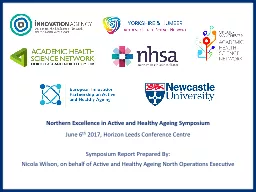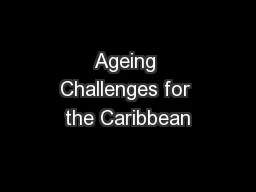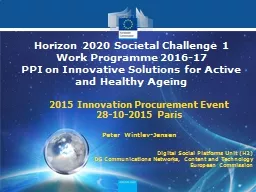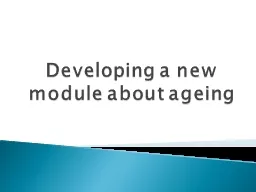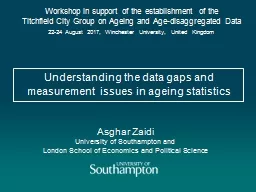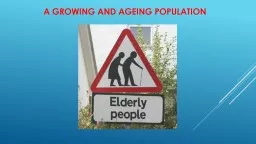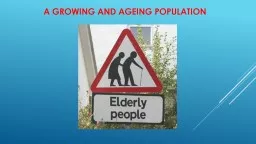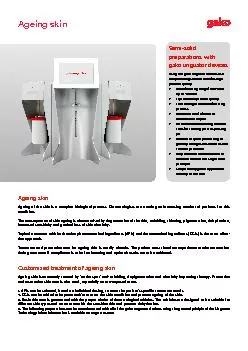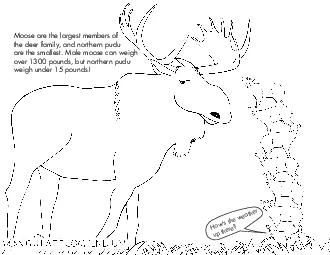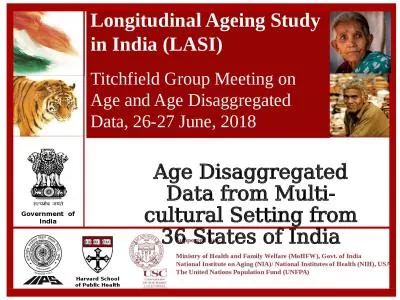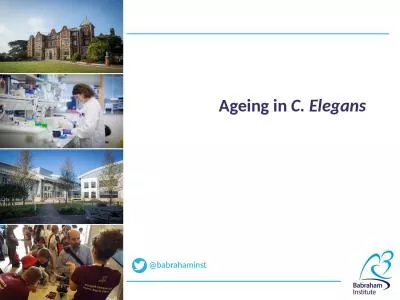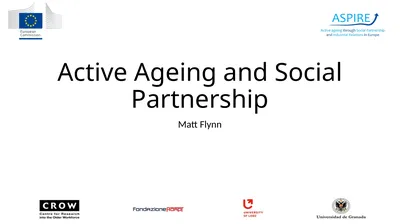PPT-Northern Excellence in Active and Healthy Ageing Symposium
Author : kittie-lecroy | Published Date : 2018-02-08
June 6 th 2017 Horizon Leeds Conference Centre Symposium Report Prepared By Nicola Wilson on behalf of Active and Healthy Ageing North Operations Executive Contents
Presentation Embed Code
Download Presentation
Download Presentation The PPT/PDF document "Northern Excellence in Active and Health..." is the property of its rightful owner. Permission is granted to download and print the materials on this website for personal, non-commercial use only, and to display it on your personal computer provided you do not modify the materials and that you retain all copyright notices contained in the materials. By downloading content from our website, you accept the terms of this agreement.
Northern Excellence in Active and Healthy Ageing Symposium: Transcript
Download Rules Of Document
"Northern Excellence in Active and Healthy Ageing Symposium"The content belongs to its owner. You may download and print it for personal use, without modification, and keep all copyright notices. By downloading, you agree to these terms.
Related Documents

